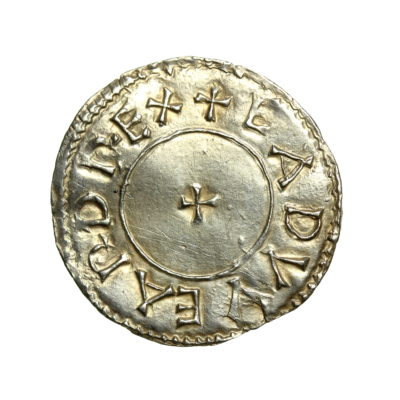
Edward the Elder (899-924): Son of Alfred the Great, Edward spent much of his reign retaking the Danelaw from its largely Scandinavian-descended inhabitants. By the end of his tenure, most of the territory had been re-absorbed and the Danish Jarls firmly subjugated by both force and diplomacy. A great soldier, his military exploits have somewhat dominated other important aspects of his reign – such as his socio-political re-organisation of Mercia and East Anglia into new administrative shires. Only recently has Edward been studied in depth, overshadowed to a degree by both his famous father and contemporary ally in the English fightback – Lady Æthelflæd of Mercia. His coinage is highly varied, including both portrait and non-portrait types as well as very rare ‘pictorial’ issues
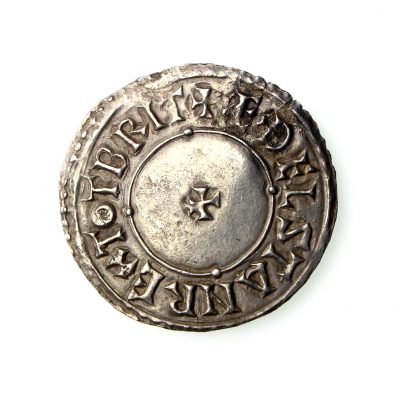
Æthelstan (924-937): Regarded by some as the very best of all the English Kings (even better than Alfred), Æthelstan’s achievements draw on aspects of both his father and grandfather’s rule. In addition to being a capable military commander and well-able to defend the realm, he was also a statesman of note. Securing his borders with Wales via clever diplomacy and making supreme efforts to ensure that Scandinavian-aligned Northumbria would not break away from England, he was also deeply concerned with undertaking sweeping legal reforms. A shrewd man in matters fiscal, he promoted regional trade centres, re-organised aspects of the minting process and struck coins bearing his name that declared him ‘King of All Britain’ – a proud but perhaps not totally inaccurate boast. In 937, he achieved a stunning victory when he defeated a joint invasion force of Dublin Norse and Scottish at the Battle of Brunanburgh – though he died only a few years later.
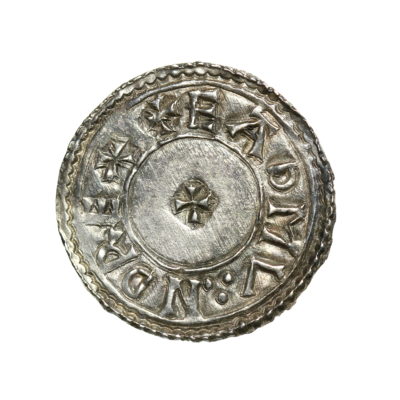
Eadmund (939-946): Second son of Edward the Elder, Eadmund ascended to the throne as his brother (and predecessor) Æthelstan had no children. Though forced to make early concessions when Anlaf Guthfrithsson succeeded in resurrecting the old kingdom of Danish Northumbria, Eadmund retook the region after consolidating his position. Sometimes known by the epithet ‘The Magnificent’, Eadmund was a litigious man – noted for his compilation of several law codes. Most of these are concerned with increasing social stability and creating a more structured, mutually supportive society. However, he was also evidently interested with aspects of the occult – some of his ordinances forbid the consumption of hallucinogenic plants and performance of magic or sorcery! He was abruptly murdered in 946 by an outlaw while defending one of his servants, and was succeeded by his younger brother Eadred because his own children were too young to become monarchs in their own right.
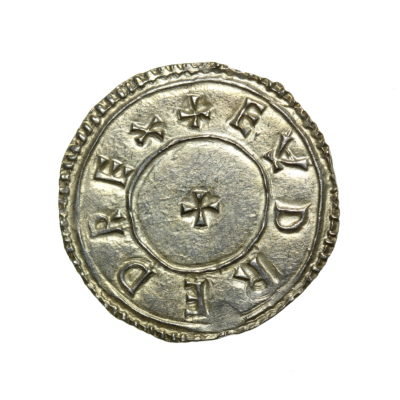
Eadred (946-955): On taking the throne, Eadred faced exactly the same issue as his brother had some seven years before – Northumbria yet again separating from England. Keen to stamp the problem out for good, Eadred seems to have engaged in a ‘scorched earth’ policy – destroying the region’s infrastructure and incentivising its inhabitants to support him over their usual Norse allies. This eventually worked, as in 954 the last ‘Viking’ King of York was exiled and promptly murdered by one of his own dissatisfied nobles. This is certainly Eadred’s best known achievement, though he also was keenly involved in the promotion of Benedictine monasticism – which flourished in England during his reign. He seems to have been badly affected by some sort of digestive disease that prevented him being properly nourished by food, and died childless in 955.
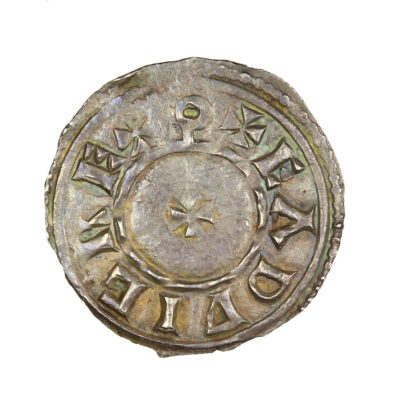
Eadwig (955-959): Eadwig was the elder son of Eadmund, taking the throne after achieving his majority. One of the shortest reigning of all the Late Anglo-Saxon Kings, Eadwig’s reign was plagued by factionalism and alleged scandal. Popular history tells us that he was discovered by Abbot Dunstan ‘cavorting’ with an Anglo-Saxon noblewoman and her daughter during his coronation feast, though this is almost certainly a later fabrication. It is thought that his animosity with the Church was rooted in their dissolving of his marriage on account that he and his wife were too related. This caused an apparent schism in the English court, with some supporting Eadwig’s position and others his younger brother -Eadgar. Numerous land-gifts by Eadwig during his reign have been interpreted as an attempt to bring further support to his cause. However, in 957, Eadwig was forced to acknowledge his brother’s co-rule alongside him – but conveniently died in 959 before a full-blown civil war could break out. His coins are probably the rarest of all the Later Anglo-Saxon monarchs, being very hard to find in general.
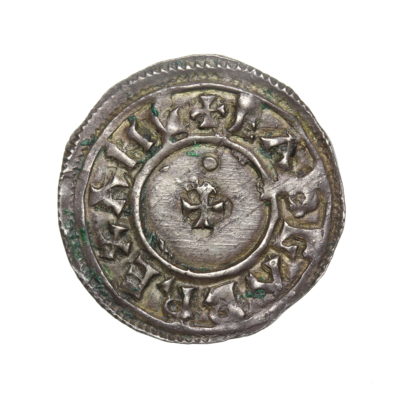
Eadgar (959-975): Known as ‘The Peaceful’ – Eadgar’s reign flies in stark contrast to that of his older brother. His reign was indeed stable and peaceable – reflecting to some the very pinnacle of the 10th century English state. Overthrowing many social norms, he was not crowned until 973 – perhaps keen to make a political statement in celebrating the very peak of his power and authority. Uniquely, his third wife Ælfthryth was anointed as Queen alongside him – an unprecedented occurrence. For numismatists his reign is of acute interest – as he instigated a major reform of both weights and measures alongside with the coinage itself. From 972, coins were no longer struck regionally – instead, new types using standardised, centrally produced dies would be issued every few years and the old money called in for re-minting. The use of non-portrait designs was dropped totally, every subsequent coin struck in England bearing the image of the King on its obverse face. His premature death in 975 marked the beginning of a decline which England would take decades to emerge from.
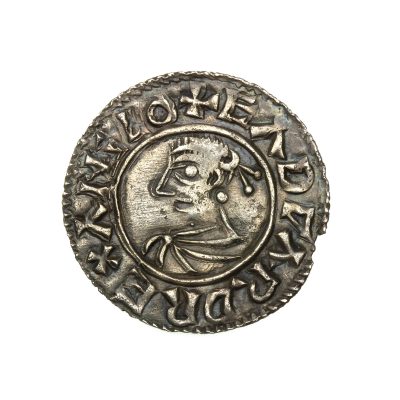
Edward ‘The Martyr’ (975-978): Taking the throne as a child of only twelve after the early death of his father, Edward was the eldest son of Eadgar. However, he lacked popular support as his mother had not been Ælfthryth – who had been officially anointed as Queen alongside Eadgar at his coronation in 973. To the Anglo-Saxon nobility, this gave him a lesser status. Already weak and easily manipulated as a child monarch, Edward was seemingly undermined by his own nobles and relatives – regional instability becoming rife and governmental business grinding to a halt. In 978, he was brutally murdered at Corfe, Dorset -with some suggesting that the force behind this was his own step mother Ælfthryth, keen to help propel her own son Æthelred onto the throne. Buried quickly with little ceremony – he was only after some years accorded a proper, royal reburial. When exhumed, the corpse was reportedly found to be in perfect condition. This was declared a miracle, and as such Edward acquired the epithet ‘The Martyr’ due to both this occurrence and his untimely, murderous death at the hands of his own people.
Under the rule of Alfred, a status quo had been achieved. Following his successes at the Battle of Edington in 878 and treaty with Guthrum in 880, breathing space had been achieved against the marauding Scandinavians. A ‘levelling up’ of the country thus began, with Alfred as its de-facto ruler following his assumption of the title ‘King of the Anglo-Saxons’. Social identities were beginning to change, while economic, legal and educational reforms were pushed through. These were balanced by the construction of local fortifications (Burghs), creation of standing mobile garrisons and improving the royal fleet.
The Scandinavians return
The relative peace and stability achieved through the 880’s was abruptly interrupted in 892-893, when Scandinavian incursions resumed. Two expeditions made landfall in Kent, though these were markedly different in character to the ‘Great Heathen Army’ which landed in 867 as this time entire families were migrating. This perhaps inferred a greater emphasis on long-term settlement rather than acquiring temporary plunder. The threat was not confronted by Alfred, but rather his son Edward – who defeated them decisively in a series of running engagements. The survivors variously returned to Scandinavia, or fled to Northumbria. Alfred’s reforms had stood up to their test, and Edward secured his status as a skilled military commander. His grooming for succession through the 890’s is visible in his witnessing of administrative documents; a Kentish charter from 898 names him as Rex Saxonum – perhaps implying that Alfred had already made up his mind, or alternatively indicates that he was utilising the ‘sub-king’ system adopted by his forebears.
The English ‘Reconquista’
In 899 Alfred died, and Edward succeeded to the throne –crowned at Kingston-upon-Thames in 900. Whereas Alfred had largely respected the Danes in England who had settled peaceably, under Edward’s rule a change in policy is observable. Peace treaties were agreed with East Anglia and Northumbria and ratified in 906 – implying that hostility was bubbling away under the surface in his early reign. By 909, Edward was raiding into the Danelaw with provocative attacks – including one which ‘liberated’ the relics of St Oswald from Lincoln Cathedral. He was supported in these ‘pushback’ efforts by a formidable ally – the legendary Lady Æthelflæd of Mercia, Alfred’s own eldest daughter. Her husband Æthelred, the Lord of Mercia, had administered the old western portion of the kingdom in a deputy role to Alfred following the deposition of Danish-sponsored (supposedly) Ceolwulf II in c. 880. From 911 onwards, Æthelflaed crucially assisted Edward in the re-conquest of the southern Danelaw, not only militarily defeating its armies but also accepting the submission of its Jarls (Earls), fortifying frontier areas and encouraging English nobles to buy back land or estates. By 918, Danish East Anglia, Eastern Mercia and four of the ‘Five Boroughs of the Danelaw’ were back firmly under Edward’s control – with only Lincoln and the City of York holding out. York even requested she accept their submission the same year, though this may have been in the vain hope that such an alliance would deter the external threats from the displaced Norse rulers of Dublin, who under their leader Rægnald quickly took over the city later that year. Æthelflæd’s significant role cannot be understated, and her status as a major player is evident given that the submission of many Danish towns was given to her as opposed to Edward. She died in 918, and following her death the ‘special status’ of Mercia that had existed as a semi-autonomous region ended. With her help, Edward had effectively corralled Danish resistance north of the Humber, excepting for the city of Lincoln – which independently struck Anglo-Viking coinage well into the 920’s.
The last years of Edward’s frenetic reign are less well known, except that he re-organised Mercia and East Anglia into administrative areas (shires) that deliberately disregarded old divisions – a decision which may have stimulated a Mercian revolt in 924. Shortly after putting down this rebellion, Edward died at his royal estate of Farndon, Cheshire. Despite his achievements and a series of glowing references from Medieval chroniclers (who praised his military prowess, while conceding his lesser patronage of the arts), Edward was largely denied the in-depth study given to his father by historians until relatively recently.
Æthelstan, greatest and best?
It was Edward’s first son, Æthelstan, who succeeded to the throne. Because Edward married three times, he had a relatively large number of children – four sons and at least five daughters. No less than three of Edward’s four sons would rule England in their own right – largely due to the fact that most of them never married. In attempts to court Continental alliances, several of his daughters (both during his reign and after his death) would go on to marry European rulers – such as Charles the Simple of West Frankia and Holy Roman Emperor Otto I.
If the reign of Edward was one characterised by military success, Æthelstan’s successes must be in statesmanship. From the outset, Æthelstan seems to have set out to make his reign different from that of his predecessors – an entirely new religious order of service was created for the occasion and the use of a crown rather than a helmet (as was tradition) utilised for the ordination. Almost immediately after taking control, Æthelstan’s concerns moved to preventing further threats from Danish Northumbria. In 921, King Sihtric had launched a destructive raid into Cheshire – and it is likely that Æthelstan was very keen to avoid a repeat performance. In 926, he met Sihtric at Tamworth –where they agreed to call a ceasefire, respecting each other’s territory. The linchpin in this agreement was that Sihtric would marry one of Æthelstan’s sisters and convert to Christianity; the latter apparently being too much for him to bear as he re-converted to paganism after the wedding. However, he died prematurely the next year. Capitalising on this unexpected event, Æthelstan invaded Northumbria and took back the city of York – ensuring he received the submission of its people. Proudly independent then as it is now, the North had never been ruled over by Southern kings – and his takeover of the region was not at all popular despite being ratified by local magnates. Though he made generous gifts of land and money to the northern Church and Archbishop of York – Æthelstan would never truly wield power over the North in the same way that he managed with the rest of Britain. The inhabitants of Northumbria, following over 60 years of Scandinavian intermarriage and intermingling following the original invasion of the Great Heathen Army, still preferred to align with the Norse more than anyone else.
Æthelstan also secured his western borders – fixing the limits between England and Wales during a summit with the Welsh kings at Hereford, and enacting heavy tribute upon them. These rulers attended a number of Æthelstan’s councils between c. 928 and 935, appearing high-up on the list of witnesses to official documents. This infers that they retained an elevated status despite being subservient to him. More legal documents and charters survive from Æthelstan’s reign than any other Anglo-Saxon King. In addition to legislating on social issues such as the combatting of banditry or the minimum age for capital punishment, they also comment on fiscal matters. For example, the so-called ‘Grately’ law code includes the stipulation that there should be only one distinct coinage issued across the realm – as well as listing mint towns and promoting the so-called Burghs as trading centres. These ordinances make it abundantly clear that Æthelstan took a keen interest in legislative matters and engaged wholesale with the day-to-day business of running his kingdom, although exactly how effective his ‘reforms’ were is a hotly debated topic.
Much like his grandfather, Æthelstan also had an interest in culture and the arts – possessing a substantial personal collection of religious objects and holy relics. The propaganda value of this was not lost on Æthelstan – for example, the copy of Bede’s ‘Life of St Cuthbert’ he presented to the saint’s shrine at Chester Le Street contains a prominent artistic rendering of himself centre stage, presenting the book to Cuthbert in person!
In line with his diplomatic successes and legislative zeal, coinage was at the centre of Æthelstan’s new, ‘united’ realm. Although during his earlier reign we see the striking of regionally distinct issues, a new type was issued later in his reign – the so-called ‘circumscription cross’ penny. On this coin, he literally stamps down his authority with the bold obverse inscription: ÆÞELSTAN REX TOT[IUS] BRIT[ANNIAE] – Æthelstan, King of All Britain (or, Britons). The proclamations of his father and grandfather as ‘King of the Anglo-Saxons’ had effectively fudged the narrative, neither acknowledging or promoting kingship over British inhabitants of Danish descent. Buoyed perhaps by the military successes of both his father and himself, in addition to his Welsh and Northern diplomatic overtures – Æthelstan evidently felt confident enough to make this claim – extending his imperium over every region. This decision has generally led to historians recognising him as the first ‘King of the English’.
Æthelstan’s last years contribute markedly to his reputation as a reforming king who extended the reach of the English state. An attempted invasion in 937 by Anlaf Guthfrithsson in co-operation with Constantine II of Scotland (making a bold attempt to resurrect the Kingdom of Danish Northumbria) was soundly defeated at the Battle of Brunanburgh – yet another test for the reforms set in place by Æthelstan and his forebears. However, this success would be short lived – Æthelstan died relatively suddenly in 939 at the age of only 45, after which Guthfrithsson returned and took control of York – acting upon the inevitable ‘power vacuum’ that followed. As Æthelstan’s kingship had begun some 14 years earlier with the unconventional utilisation of a continental coronation service, so it ended equally in his choice of burial location – Malmesbury Abbey, a place which it seems held particular sway over Æthelstan’s personal devotion.
“Anlaf Guthfrithsson, give me back my regions!”
Æthelstan was succeeded by his much younger half-brother Eadmund, as he had no children. The return of Anlaf Guthfrithsson to York was quickly followed by a resumption of hostilities – a series of lightning attacks on Mercia leading to the need for quick mediation. The Historia Regum tells us that the Archbishops of York and Canterbury represented each side on the negotiating table, hashing out an agreement which led to the ceding of the so-called ‘five boroughs’ back to Danish control. This was a bitter blow for Eadmund, undoing years of hard work by his predecessor in a matter of months. However, given the North’s dislike of Southern kingship – it is hardly surprising that the inhabitants of Northumbria invited Anlaf back to rule over them. However, in 941 Guthfrithsson died – and Eadmund followed up on this turn of fate by quickly retaking the ‘five boroughs’ in 942. In 944 he finally re-conquered York, bringing Northumbria back into the English fold yet again.
Interestingly, Eadmund seems to have been uncharacteristically open and honest about his initial losses. Unlike his half-brother, he never refers to himself as ‘REX TOT BRIT’ on his coins. However, a supposedly contemporary poem within the Anglo-Saxon Chronicle commemorates his successes in re-taking Northumbria. This is very likely a cleverly-spun piece of propaganda since it casts him as a liberator, embracing the ‘English’ of Danish descent as beloved subjects and portraying him as a central figure fighting against their oppressors – the evil ‘foreign’ Norse freshly come from Scandinavia and Ireland.
Like his half-brother, Eadmund was something of a legislator – compiling three separate law codes. Two of these dealt with social issues, such as the suppression of blood feuding by wronged parties instead of accepting payment of weregild (lit. ‘man-payment’) for crimes committed against them. Clauses were also included promoting the idea of kingship as holy or ‘sacred’, in addition to emphasising the relationship between king and local governors who enforced the law (Ealdormen) as one of respect, loyalty and mutual protection. Not only does this emphasis infer Eadmund’s preoccupation with adding to his own power, but also strengthening the relationship of differing elements within upper government – as well as protecting citizens against socially corrosive (and frequently, extremely bloody) vigilante actions that could potentially destabilise local law and order. Some historians describe Eadmund’s attempts at social reform as creating the concept of societal ‘pillars’; the sanctity of the King, the mutually protective tasks of local nobles and their responsibilities (as well as those of royally endorsed officials, the Reeves) to citizens, the self-policing concept of the community and the benefits of stability within individual familial units. Interestingly, parts of his first law code expressly rule against the use of sorcery, magic and use of hallucinogenic plants.
Having made good the losses of his early reign and with two sons by his first wife Ælfgifu, Eadmund probably felt relatively secure. Under his rule, England had largely retained the stability achieved by his predecessor and indeed begun to really flourish – both culturally and economically. However, he would not live long to enjoy it. He was unexpectedly murdered in May 946 by a notorious outlaw at Pucklechurch, Gloucestershire), while defending one of his servants from attack.
Northumbria annexed
Because Eadmund’s children Eadwig and Eadgar were so young when their father died, he was instead succeeded by his brother Eadred – the youngest son of Edward the Elder. He began his reign facing yet another episode where York see-sawed back to Norse control. To make matters more confusing, conflict even arose between the Kings of York themselves – with Erik ‘Bloodaxe’ initially taking control, before being deposed by Anlaf Sihtricsson, and then returning again to rule after the latter’s death. Likely very tired of the constant bickering, Eadred invaded Northumbria in c. 948 or 950 and destroyed much of the kingdom’s remaining infrastructure, offering incentives to Erik’s supporters if they deserted him. Perhaps weary after almost 15 years of instability, the Northumbrians finally expelled Erik in 954, declaring their allegiance to Eadred. Exiled and lacking supporters, Erik was apparently killed by a dissatisfied Earl shortly afterwards. Eadred had won, and Northumbria would never again fracture away from the Kingdom of England.
Eadred’s final victory over the Northumbrians is a feature which features prominently in discussions of his reign, alongside his promotion of Benedictine monasticism (a policy which had begun under his brother Eadmund), gifting monasteries and lands to a number of individuals). The Anglo-Saxon Chronicle relates that he was a very ill man towards the end of his reign, with fewer than half the charters issued between 953 and 955 showing his presence as a witness. It is thought that he suffered some sort of digestive disease, which prevented him from eating solid foods. Eadred’s grandfather Alfred (the Great) also suffered from digestive issues, what may have been Crohn’s disease – so it is interesting to speculate that this affliction may have been in part a hereditary issue. Dying in 955, he was buried in Winchester Cathedral at the young age of 32 – having never married or had any children.
Scandal and conflict
Although Eadred had died childless, his brother’s offspring would naturally have taken precedence in the succession. As such, it was Eadmund’s eldest son Eadwig who succeeded to the throne at the age of just 15. Although he is the shortest lived of all the 10th century kings (ruling for only four years), his tenure on the throne was certainly not without incident.
Eadwig seems to have been the subject of an acute character assassination. Political factionalism and the later distorting of historical sources cloud much of what we know, with much information recorded second hand in biographies of prominent contemporary churchmen like Oda and Dunstan. In ‘the life of St Dunstan’ (who was Abbot of Glastonbury and Bishop of London), Eadwig is cast as a lecherous ruler – described as being caught ‘cavorting’ with a young noblewoman and her mother during his coronation feast, with Dunstan cast as the great moraliser who literally drags him back to his kingly duties. This act allegedly earned him the enmity of both Eadwig and the two women. It is now almost unequivocally agreed that this event never took place, the real reason for enmity between Eadwig and his bishops during this period seems to have been rooted in their disapproval of his wife – whose marriage was forcibly annulled at their behest due to consanguinity (they appear to have been third cousins). It is unsurprising that this event, which to all accounts seems to have been against the will of both parties, inspired conflict between church and state. It appears that Eadwig’s displeasure resulted in the removal of Dunstan from his Abbotship, and he temporarily went into exile in what is now the Netherlands. However, a faction at the English court remained prominently in support of him – including several prominent Ealdormen.
Eadwig’s reign is notable for its high number of land grants (gifts) to individuals by the King directly, and thus it is tempting to interpret this as a quick and easy attempt on his part to address political instability by bringing people over to his side, who were otherwise disadvantaged by Dunstan’s removal. Factionalism during his reign reached such a point that some regions actually declared their support for his younger brother Eadgar, with the kingdom being nominally ‘divided’ in 957 – Eadwig ruling in the south and Eadgar in the north. Before a full-blown civil war could erupt, he died abruptly (and somewhat conveniently) in 959 at the age of just 19.
Delayed coronations and new orders
Already administering territory north of the Thames by the time of Eadwig’s death, it was relatively simple and easy for Eadgar to transition from being a ‘sub-king’ to King of England. Known by the epithet or nickname ‘the Peaceful’, his sixteen-year reign is renowned for its stability – he faced no major challenges to his rule, nor became the victim of political infighting during his time on the throne.
Anomalously, Eadgar was never crowned at the beginning of his reign – as was usual. In a total reversal of kingly norms, his coronation did not take place until 973 – fourteen years into his rule and (although he did not know it) only two years before his death. The reasons for this are almost entirely political, not only did Eadgar likely want time to ‘prepare’ for his coronation but also use the process as the means by which to display his own power at the height of his rule. Some of the details are rather shadowy, but we do know that the ceremony took place at Bath, represented a totally overhauled liturgical service (likely devised by Dunstan, now Archbishop of Canterbury) and that Eadgar’s wife Ælfthryth was anointed alongside him as Queen, an hitherto unprecedented occurrence. An event seems to have taken place shortly after the ceremony at Chester, in which some sort of submission to Eadgar by the Kings of Wales, Scotland and Strathclyde seems to have taken place. Unfortunately, the actual happenings are much obscured by later exaggerations – chroniclers from the 12th and 13th centuries describe an ornate pageant perhaps more akin to their own times. In their retelling, Eadgar is rowed up and down the River Dee by these kings in his state barge as a demonstration of English power and display of their subservience.
Counselled by the Archbishop Dunstan, the reform of monasticism which had begun as early as late in the reign of Æthelstan (continuing through Eadmund and Eadred) reached its zenith – with the major decision to totally remove secular clergy from Benedictine monastic houses and replace them with monks being taken during this period. The success of this movement can be in part attributed to the enthusiasm of Dunstan himself, who had been heavily influenced by continental institutions of the Benedictines during his exile.
For numismatists, Eadgar’s reign is also of notable, not least in that he standardised weights and measures. In 973 he totally overhauled the coinage system – decreeing (much like Æthelstan) that only one type should be officially issued across the entire country. In contrast to the regionally issued types, similar to those struck by his predecessors, this is known as his ‘reform’ coinage -and marks the beginning of a system called Renovatio Monetae. Under this system, one type of coin would be issued across the whole country by a complex system of disparate moneyers at various mints. After a certain amount of time, this type would be called in and replaced by another. The upshot of this was that in addition to having greater consistency across the realm, a sort of commission or tax could be charged for the privilege of exchanging old coin for new. This rather underhanded procedure (by modern standards at least) brought extra income for the crown. In addition to this, there is evidence that aspects such as die-production became centralised; with dies manufactured at one set location before being sent out across the country. This contrasts with the previous ‘regional’ coinages, where dies were manufactured on a more local basis.
Edward – King and Martyr
In 975, Eadgar died, leaving his two sons – Edward (12) and Æthelred (9). Edward duly succeeded to the throne, though (as shall be seen) not for long. The Anglo-Saxon Chronicle records ill omens following this event, not just the appearance of a comet – but also famine and social disturbances. The latter of these can in part can be attributed to a newly brewing crisis of succession. Like his ancestor Edward the Elder, Eadgar had married several times. Although Edward was his eldest son by his second wife, crucially, Æthelred was his son by Ælfryth (his third wife) – who had been anointed Queen alongside him at his coronation in 973. This argument that Æthelred had precedence as the son of a royal queen caused a crisis of succession on Eadgar’s death – although Edward had high-ranking clerical support from the Archbishops of Canterbury and York, Æthelred retained the backing of many secular nobles as they felt his status was higher. Some regional Ealdormen are recorded as nearly coming into active warfare against each other over the issue, while the lack of written charters and other governmental documents during this period suggests some degree of breakdown within the internal workings of Edward’s administration. Child monarchs rarely court the virtues of stability or well-counselled rule, as they inevitably become either political pawns or are overshadowed by the self-serving machinations of particularly ambitious advisors – and Edward seems to have been no exception to this generalisation. Yet again, England was on the brink of civil war. Nobles began to take matters into their own hands, and even attacked Benedictine institutions to take back land they had been ‘deprived’ of during Eadgar’s rule – apparently leading to a great secular repossession of property.
Perhaps the best-known aspect of Edward’s reign is how it ended – brutally. He was murdered in shadowy circumstances close to the modern village of Corfe, Dorset. Chroniclers and historians have openly argued that this tragedy was undertaken at the instigation of Ælfthryth, taking action to ensure that her son benefitted directly and would succeed the throne. Several different versions are recounted in various sources, but what is interesting is that the Life of Oswald relates how Edward caused much resentment amongst the Anglo-Saxon nobility through ‘intolerable violence of speech and behaviour’. This, perhaps, is indicative that he suffered from severe autism or perhaps some sort of mental illness – traits which some perhaps felt gave them carte blanche to remove an obviously ‘incompetent’ ruler from the throne before they did too much damage. Irrespective of the reasoning, Edward’s death was evidently perceived as a shocking event – the Anglo-Saxon Chronicle proclaiming that “No worse deed for the English race was done than this.” Although quickly buried at Wareham, Edward was given an appropriately royal reburial the next year at Shaftesbury Abbey. His body was allegedly found to be totally free of decomposition – a miraculous discovery. It is this (in combination with the circumstances of his death) that have lead to his epithet ‘the Martyr’.
And so it came to pass that in 978, at the age of just 12, Eadgar’s youngest son Æthelred inherited the throne of England. Although ruling over a united realm, his reign marks an end to the stability of his predecessors. As such, this marks a useful point of division. Æthelred and his successors will therefore be discussed in a separate essay.
Collecting coinage of the 10th century
As the above hopefully shows, the scope for collecting coins struck for the Late Anglo-Saxon Kings of All England is broad indeed. By contrast to coins of the earlier Anglo-Saxon kingdoms, issues of the 10th century are comparably more common and generally easier to acquire. However, being sometimes of lesser quality silver and thinner, they do have a propensity to fracture, break and chip more easily. A substantial proportion of coins brought to the market will have defects like these, and thus collectors (especially those on a budget) may need to make small sacrifices on grade in order to acquire a desirable piece.
In addition to being susceptible to edge-loss, one might also be forgiven (on first glance) for thinking that there is very much a one-dimensional approach to design on coins from this period. Indeed, the fashion set by Alfred and Edward the Elder for non-portrait ‘two line’ or ‘three line’ types depicting the moneyer’s name on one side and the ruler’s on the other really comes through up till Eadgar’s reign. Diverse regional variations are visible in these issues, which is why coins are sometimes described in catalogues as ‘Northeastern’ or ‘Northwestern’ in style. Although the line types represent the most commonly encountered issues from the 10th century, it is also worth noting that all the Late Anglo-Saxon rulers also issue portrait types – generally struck at Eastern mints in England. Although in the author’s opinion many of these are sub-standard renderings when compared to the early Mercian or Kentish pence – there is something rather charming about their ill-proportioned profile busts with spiky hair and overly-large eyes. In addition to these, there are also the ‘special motifs’ or ‘pictorial’ series of coins – which encompass the so-called ‘tower/minster’ issues of Æthelstan and the ‘flower’ pence of Edward the Elder. However, the latter are extremely rare and rarely come to the market.
So, how to go about collecting coins of this period? There are several approaches – and indeed perhaps this is best exemplified by two of the greatest 20th/21st century collectors of the Anglo-Saxon series: Lord Stewartby and R P Mack. Whereas Stewartby focused on enormous breadth and pieces of academic interest, Mack is generally noted as more of a quality collector – seeking pieces with greater eye appeal. Collectors could go down either route, though the former will likely end up somewhat cheaper than the latter. A nice sequence of high-quality portrait types for each monarch would be a worthy endeavour, though it must be said that Eadwig is a particularly tricksy candidate to pin-down in this respect. It is also worth mentioning that in this period we start to see mint names occurring on coins more frequently (particularly in the reign of Æthelstan) – and collectors may equally want to acquire pieces from their local mint as part of a broader collection. Those with a very academic predilection may also consider a more maverick approach and focus on one specific type issued by one ruler – e.g. the ‘line’ types of Eadmund or Eadred, collecting by moneyer. Although this angle might appear a very unusual one, such an approach could consist the groundwork for some useful research – given that there is much we do not yet know about die-use in this period. Acquiring pieces from diverse moneyers could show the sharing of dies and their movement to different mints, a very important insight into understanding how Anglo-Saxon minting was organised, administrated and regulated.





